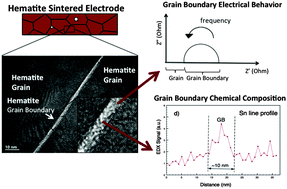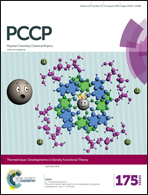Understanding the fundamental electrical and photoelectrochemical behavior of a hematite photoanode†
Abstract
Hematite is considered to be the most promising material used as a photoanode for water splitting and here we utilized a sintered hematite photoanode to address the fundamental electrical, electrochemical and photoelectrochemical behavior of this semiconductor oxide. The results presented here allowed us to conclude that the addition of Sn4+ decreases the grain boundary resistance of the hematite polycrystalline electrode. Heat treatment in a nitrogen (N2) atmosphere also contributes to a decrease of the grain boundary resistance, supporting the evidence that the presence of oxygen is fundamental for the formation of a voltage barrier at the hematite grain boundary. The N2 atmosphere affected both doped and undoped sintered electrodes. We also observed that the heat treatment atmosphere modifies the surface states of the solid–liquid interface, changing the charge-transfer resistance. A two-step treatment, with the second being performed at a low temperature in an oxygen (O2) atmosphere, resulted in a better solid–liquid interface.


 Please wait while we load your content...
Please wait while we load your content...